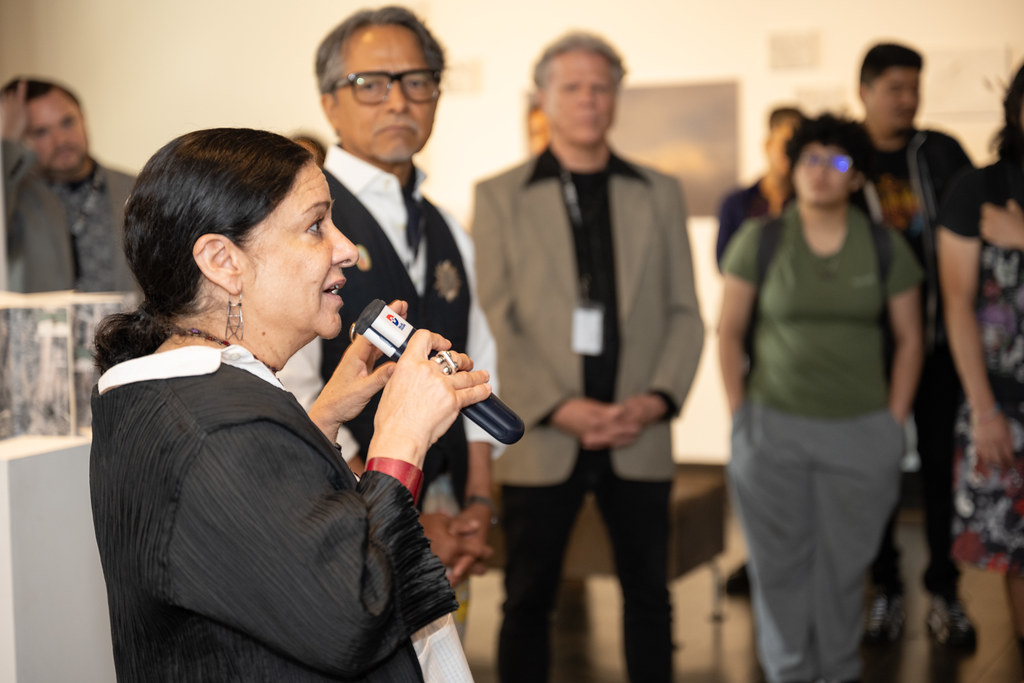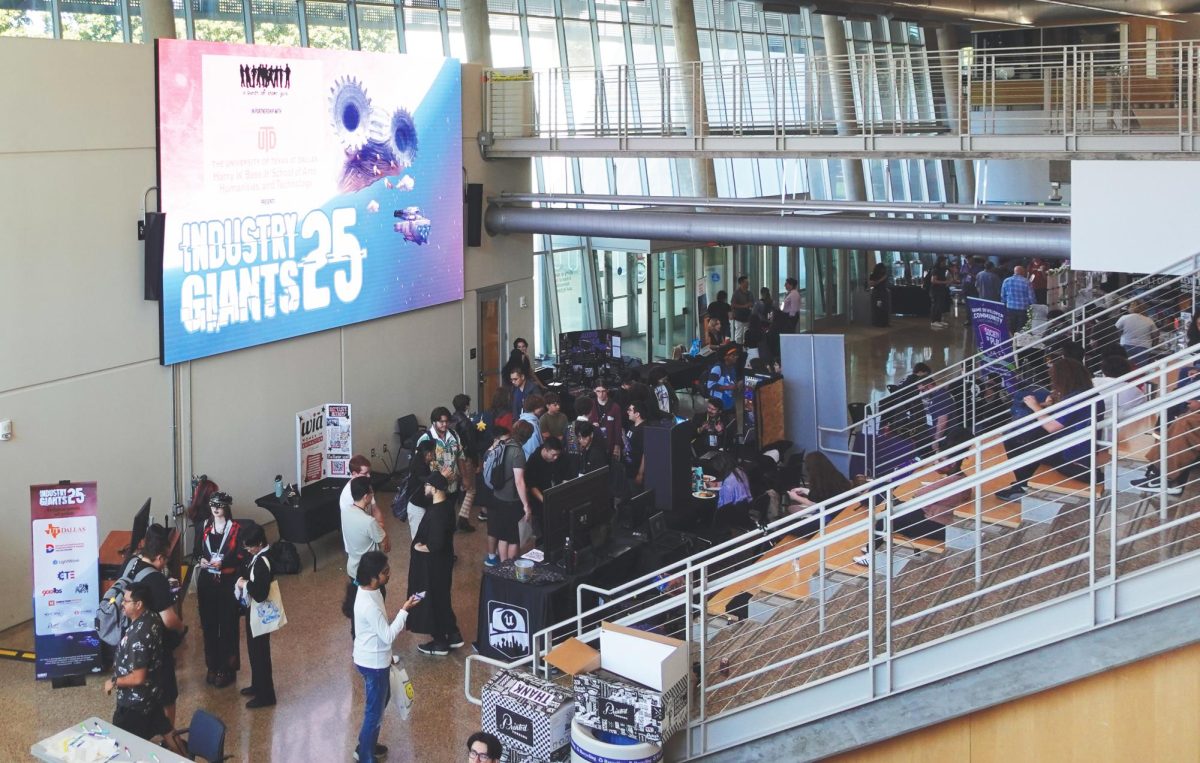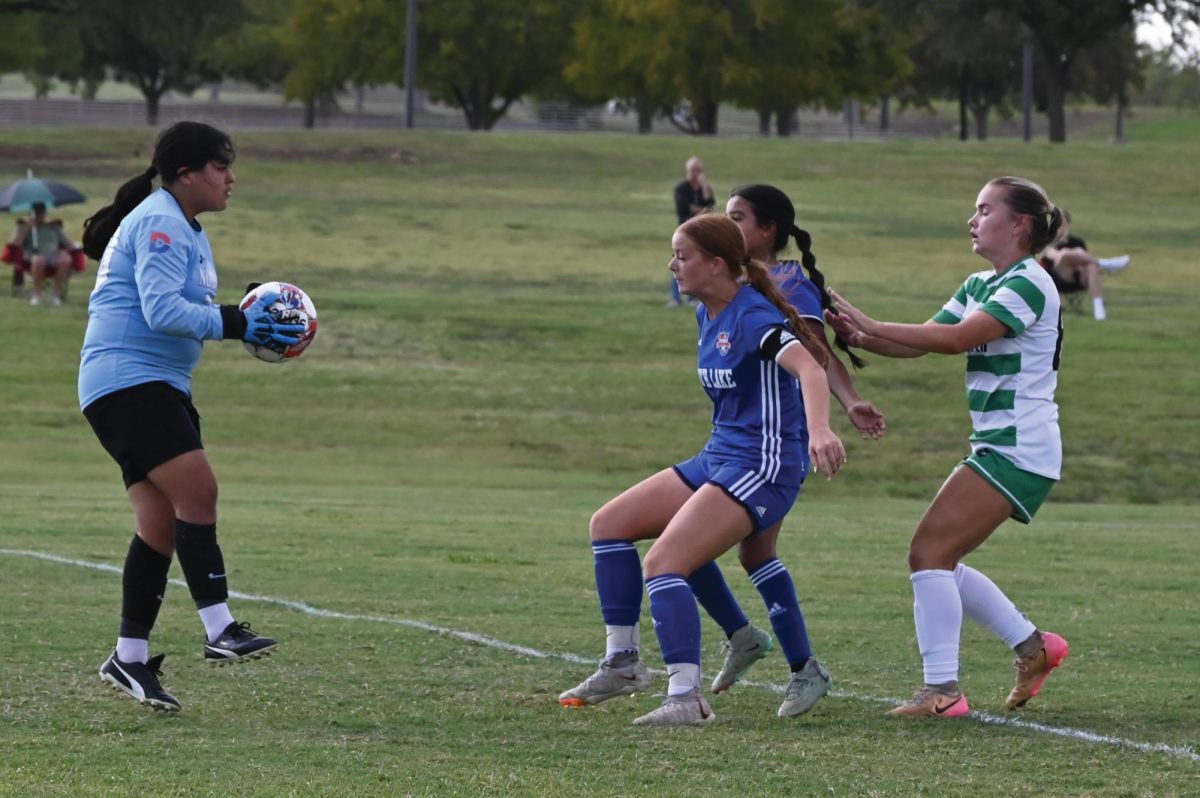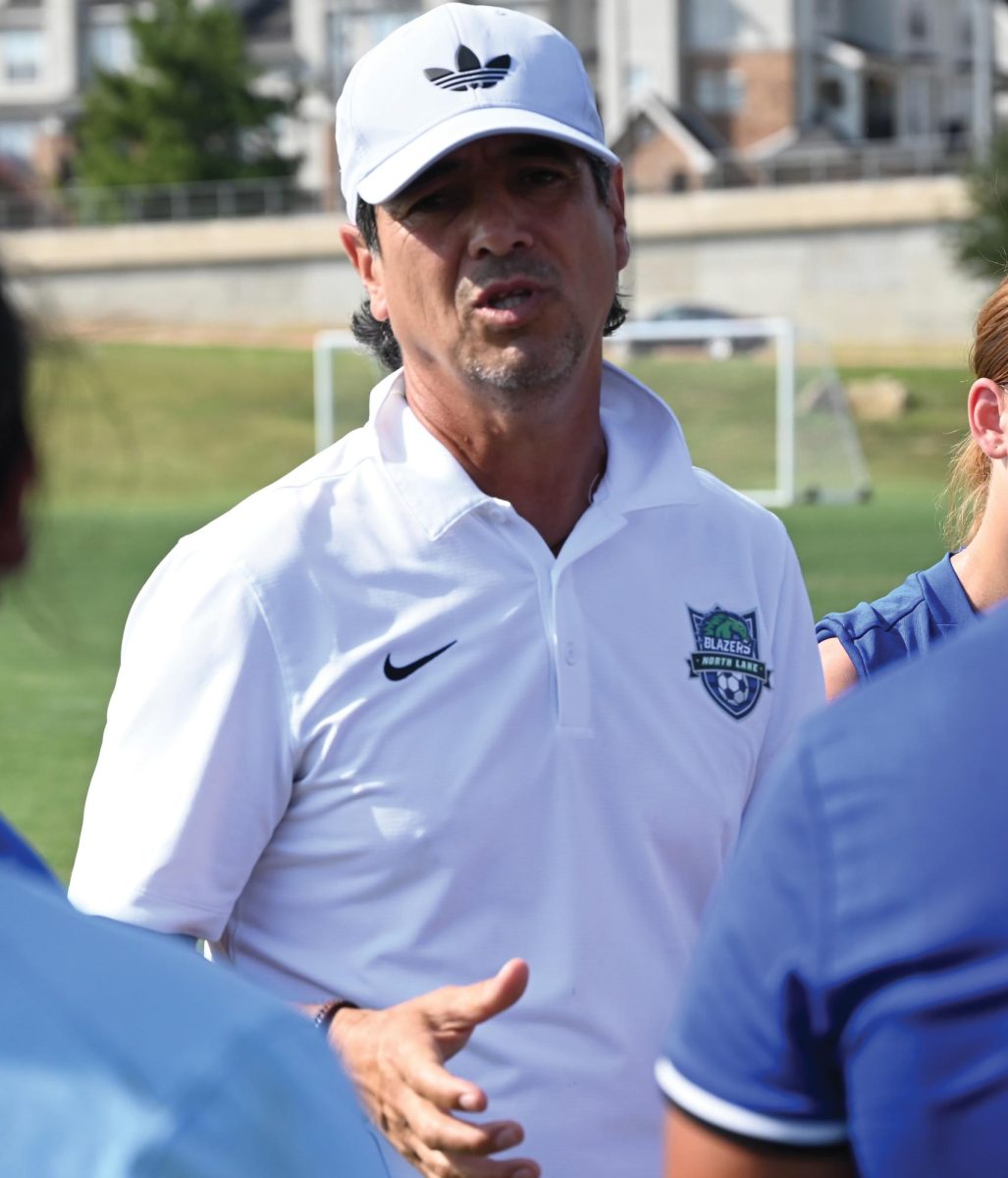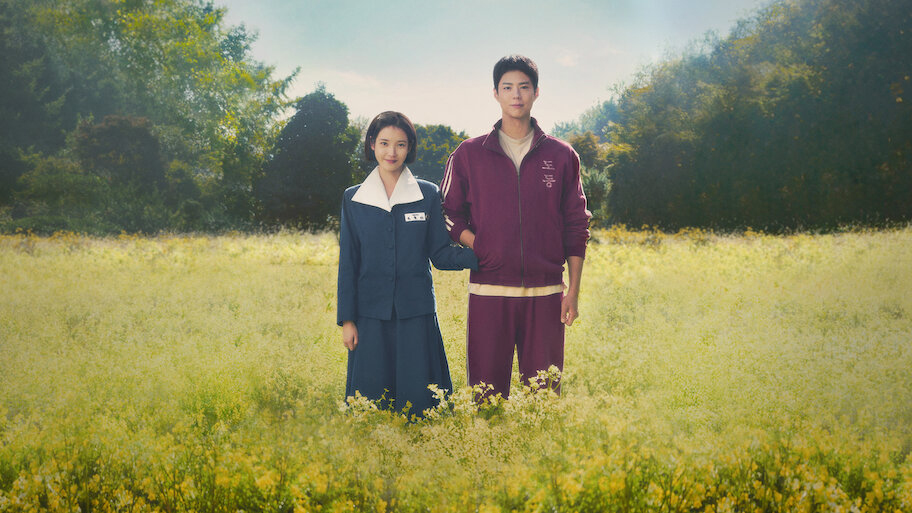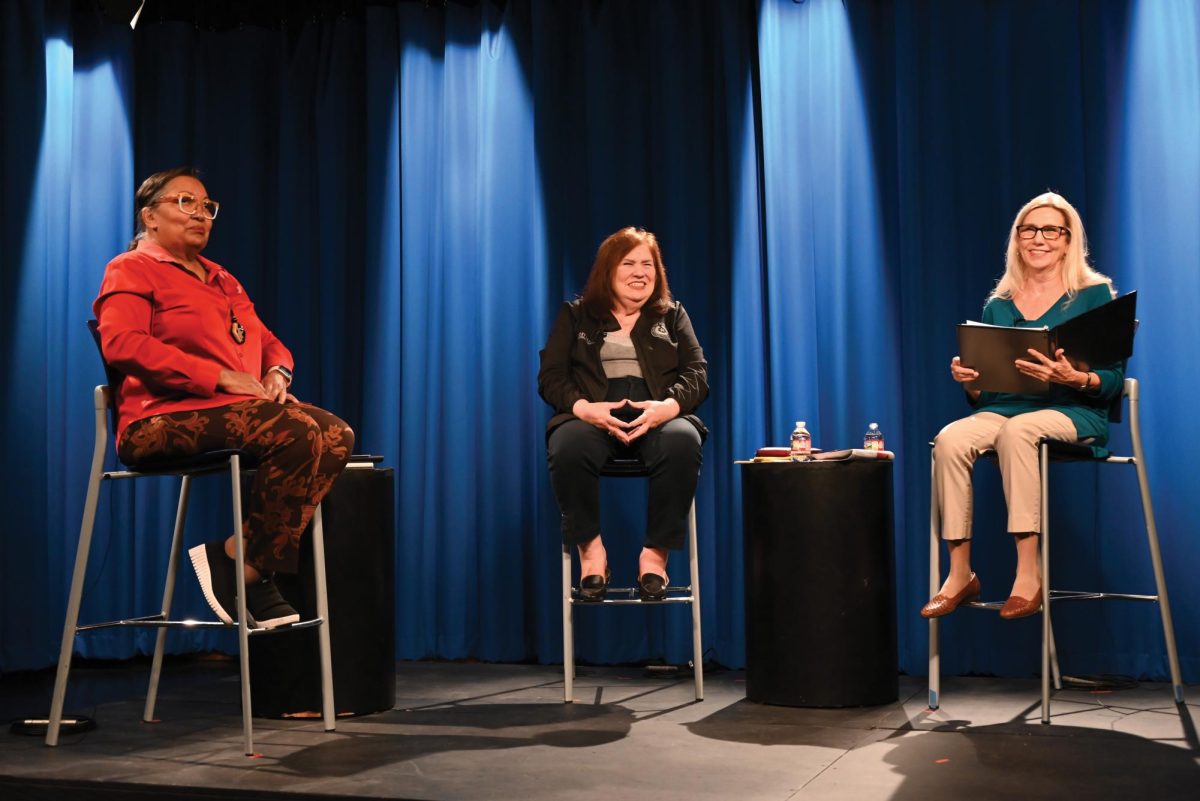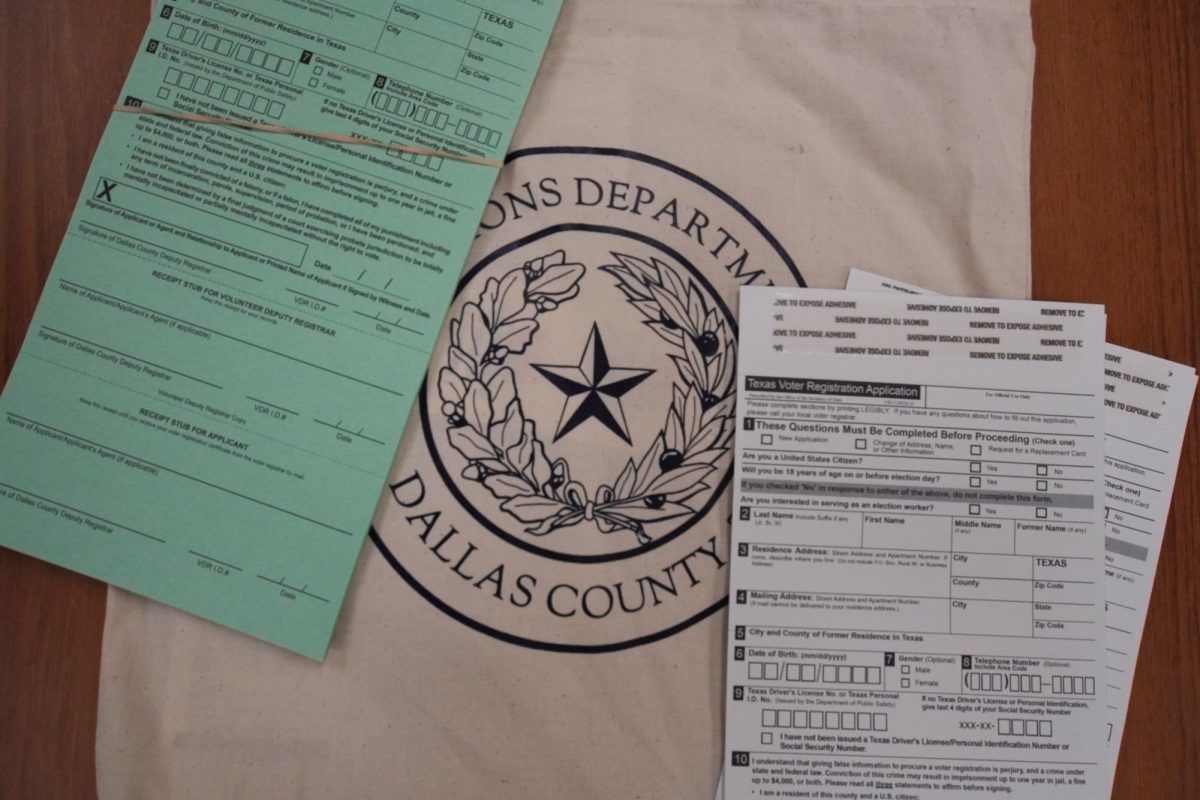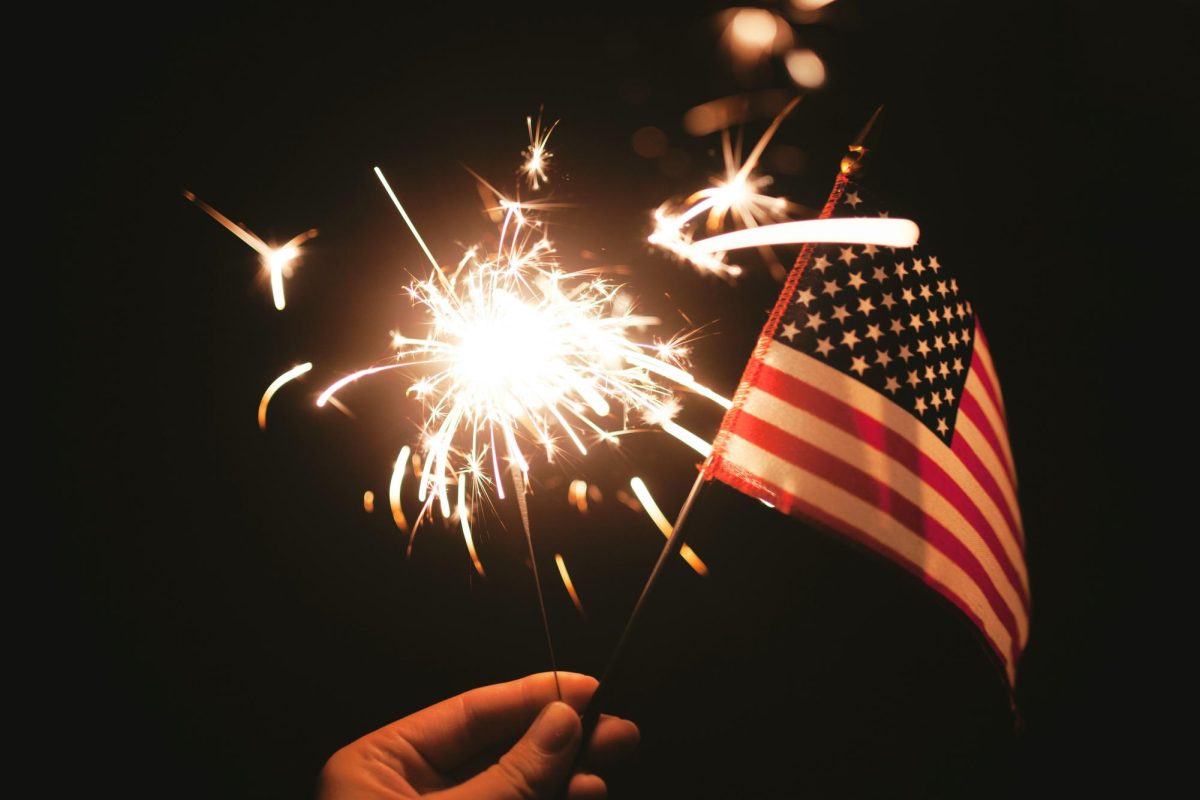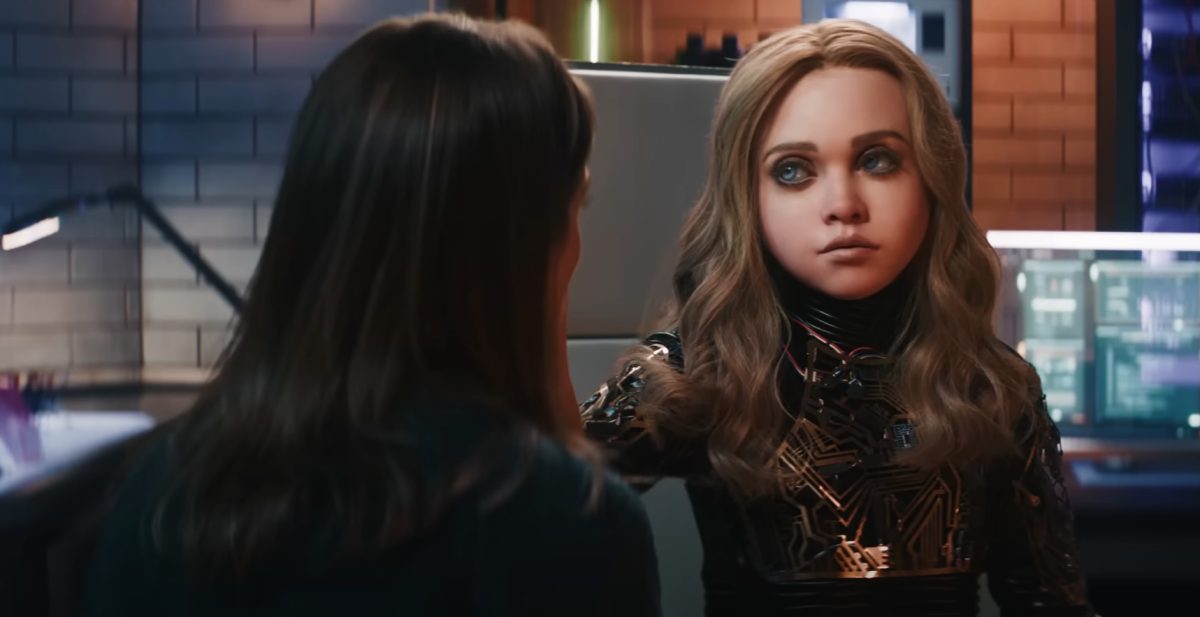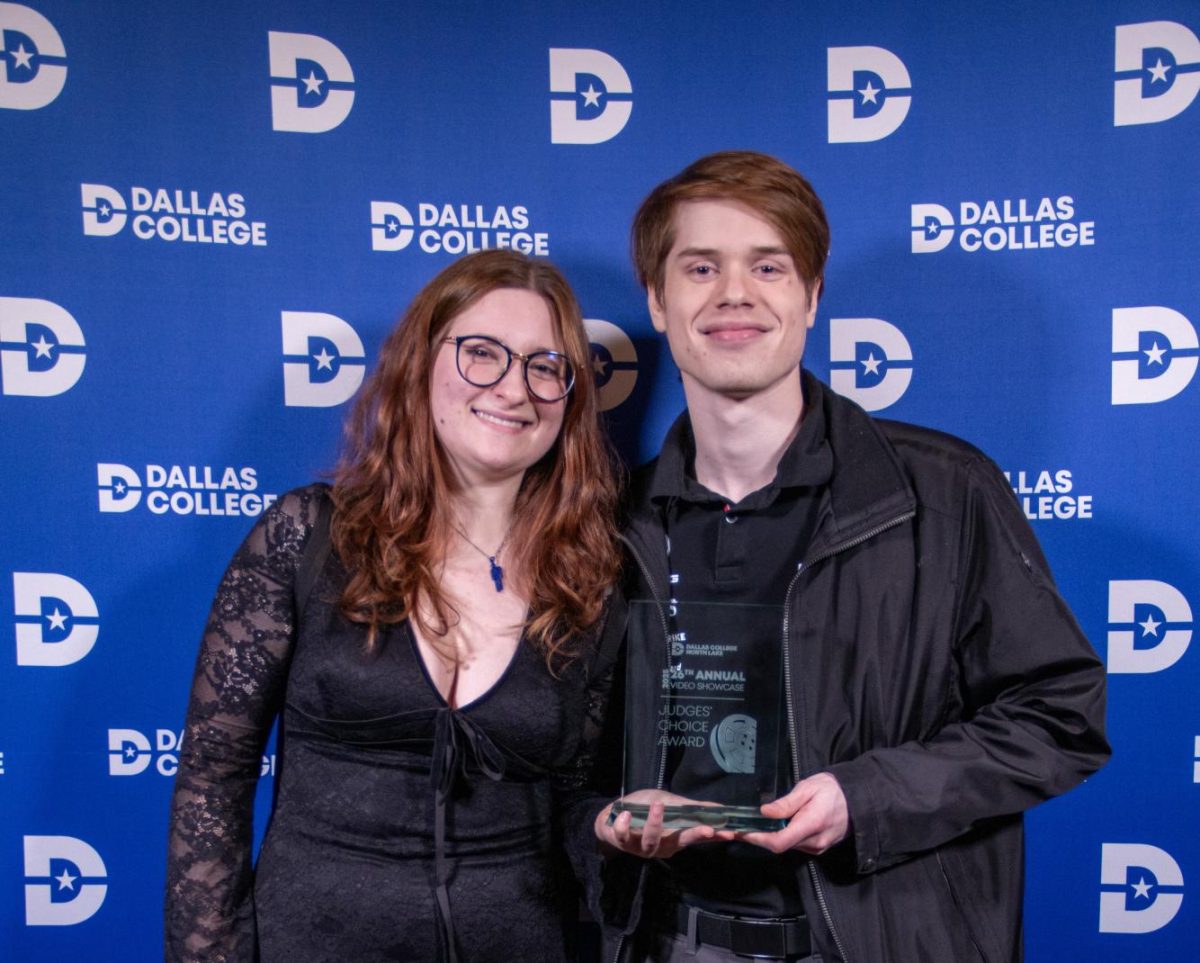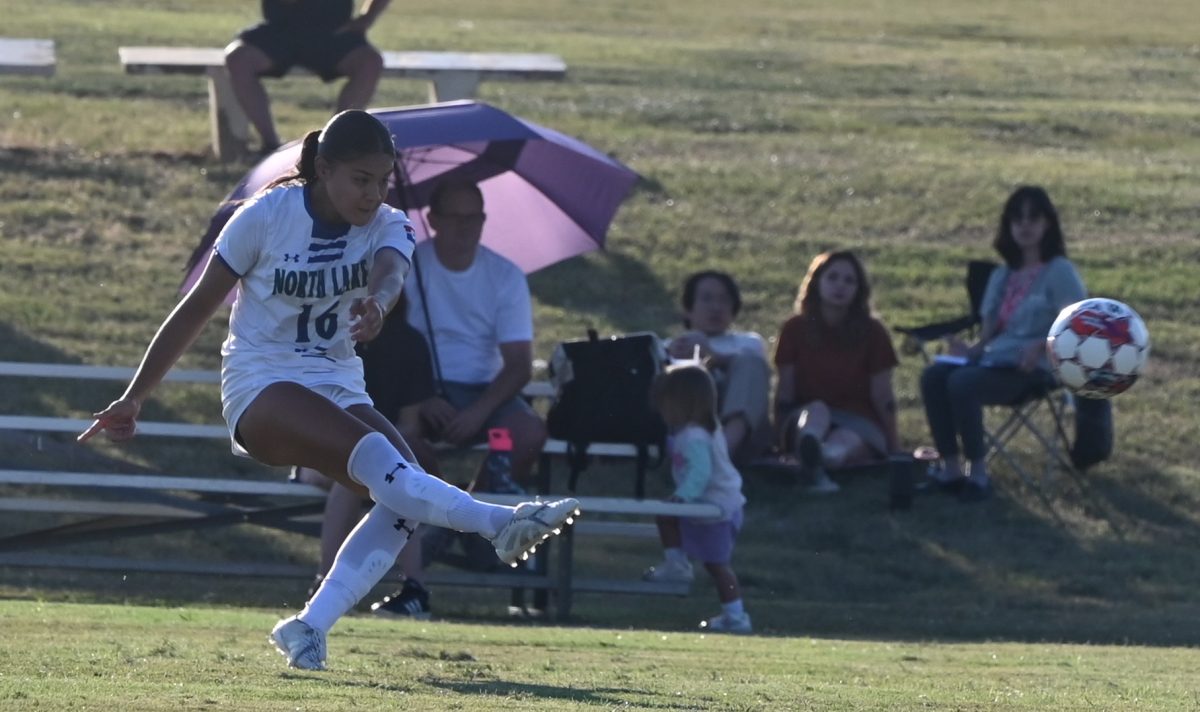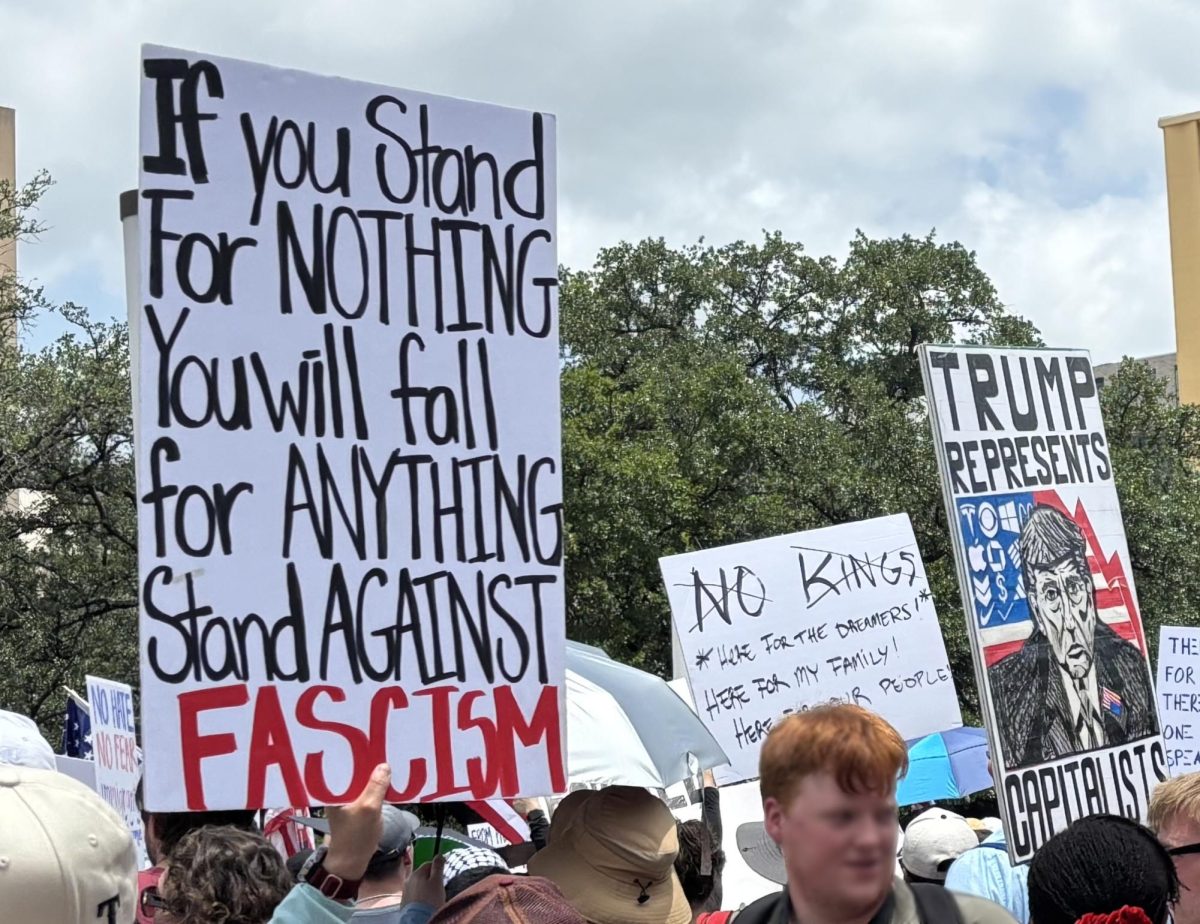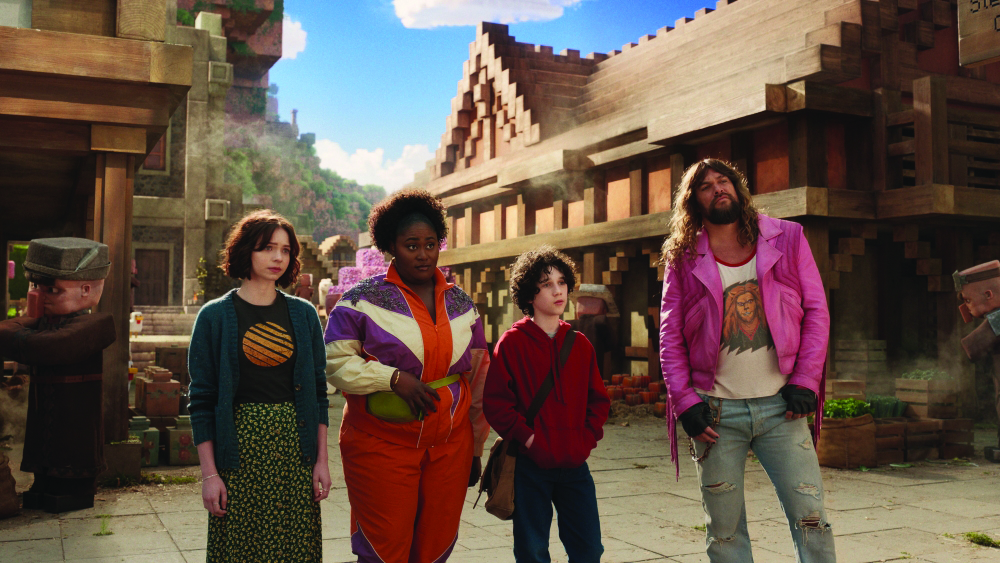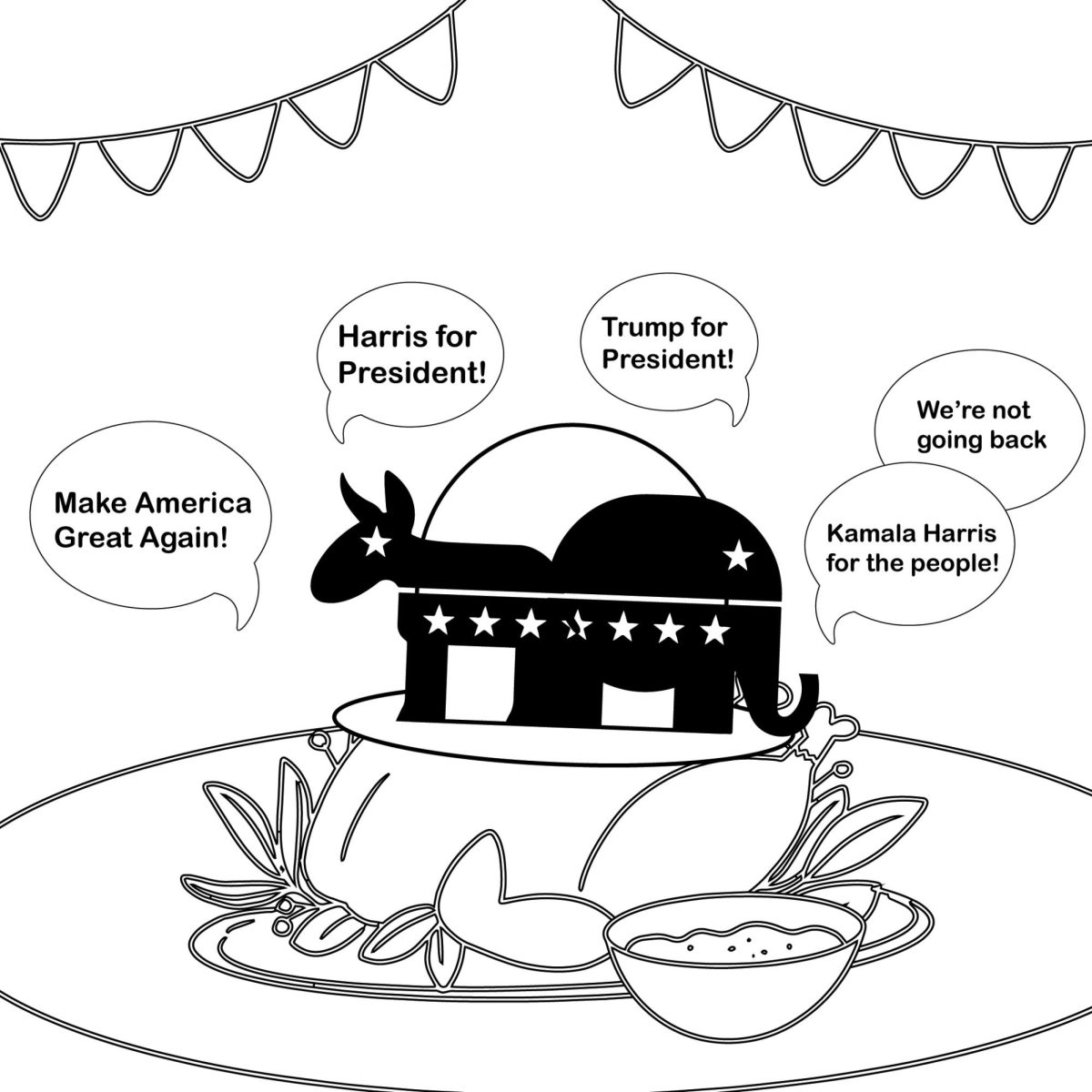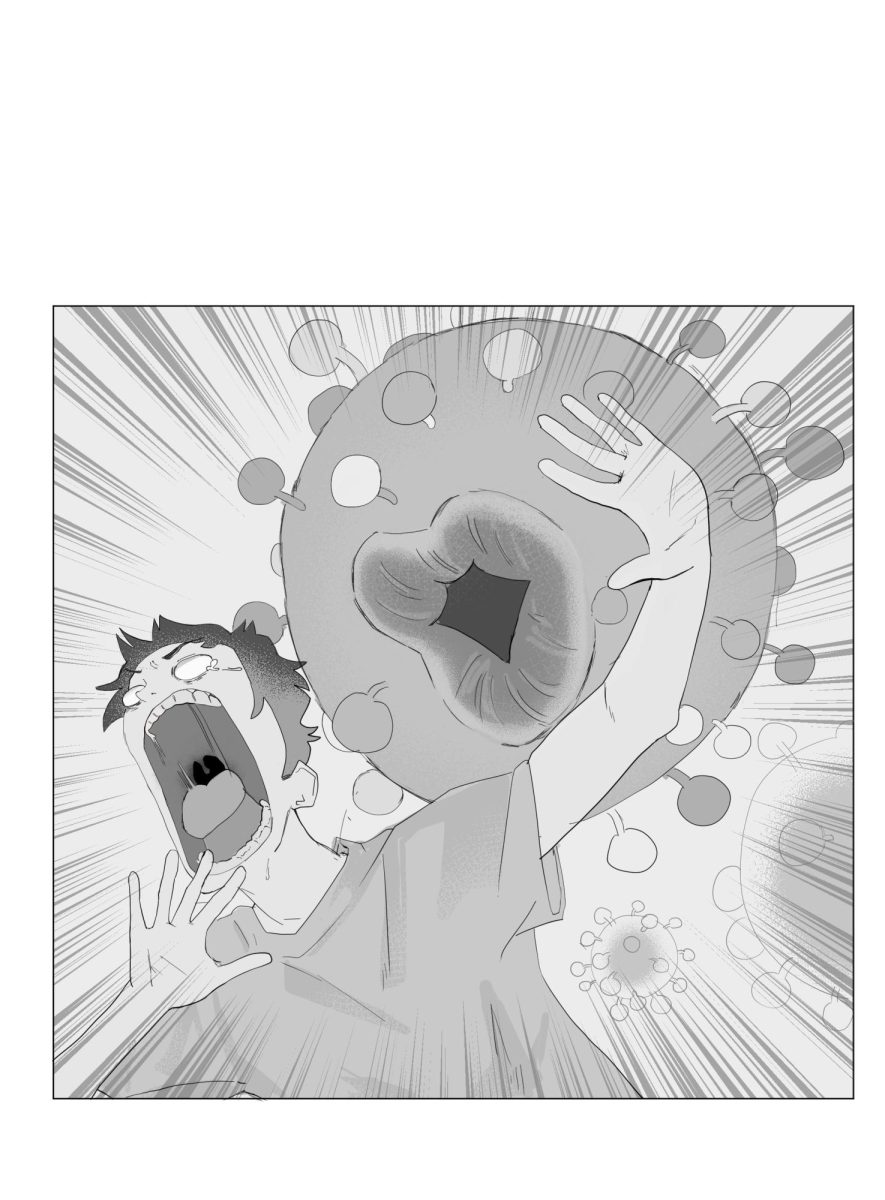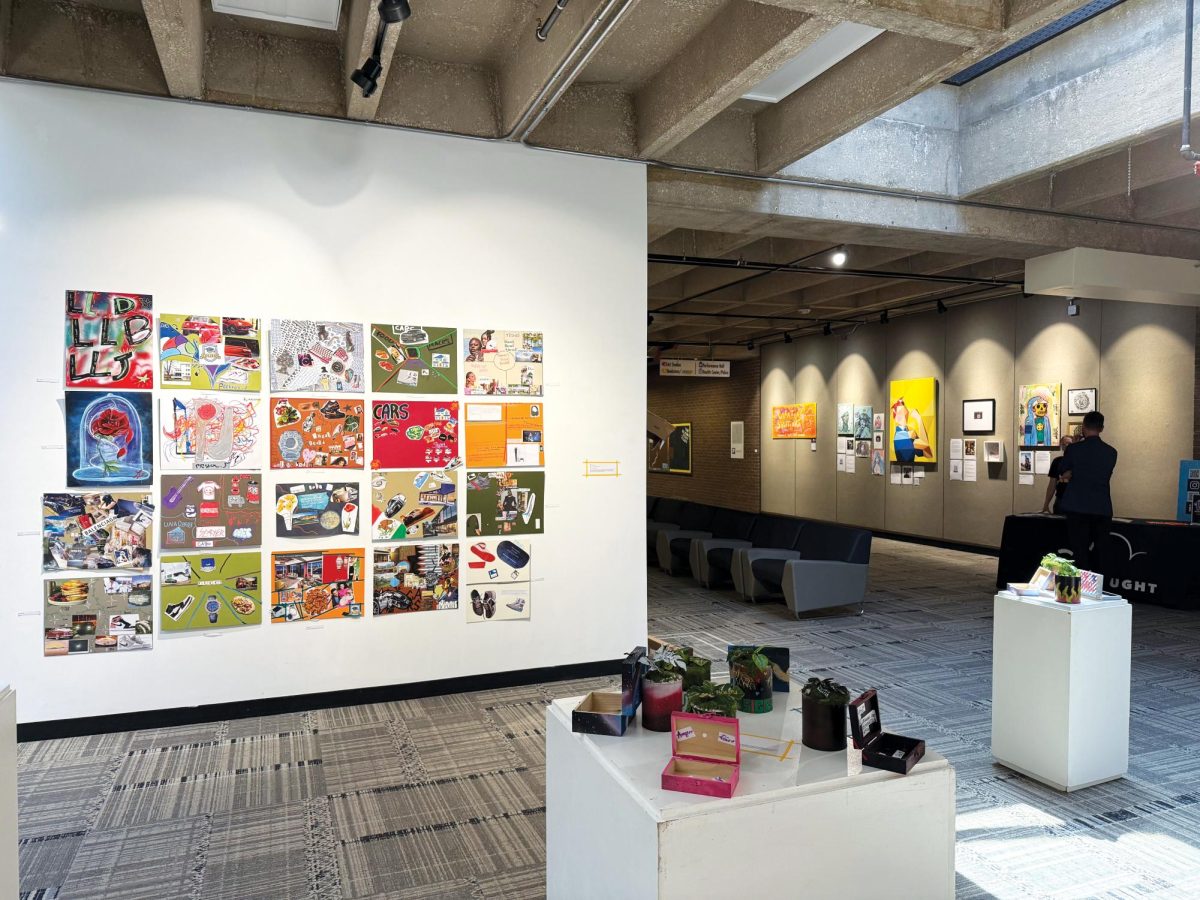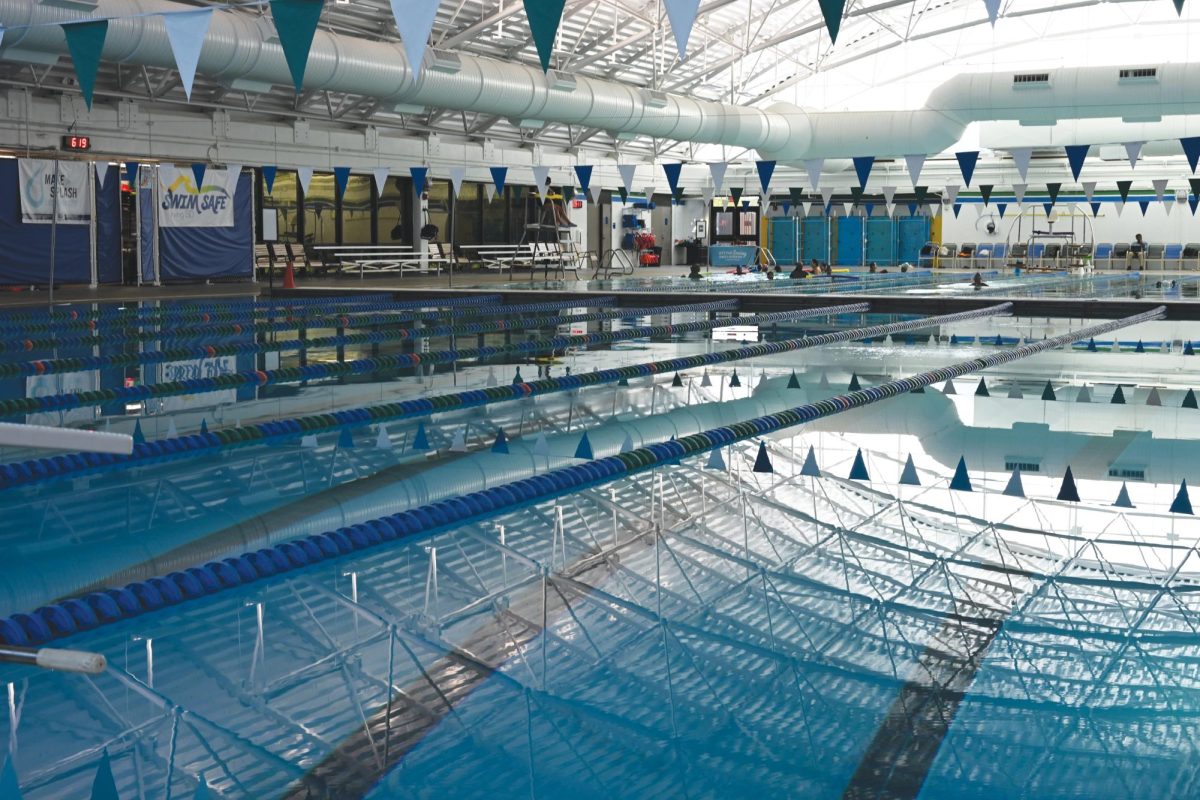As part of the celebration of Hispanic Heritage Month, Dallas College held a special three-day visit from Cristina Kahlo, the grandniece of renowned artist Frida Kahlo. Nestled in the Cliff Gallery on the Mountain View Campus was a carefully curated collection of photographs created by Kahlo. Each photo followed a theme of nature through her unique perspective. The exhibit was on view Aug. 15 through Oct. 10.
Students from all of the Dallas College campuses were invited to attend. On Sept. 22, more than 100 students attended her talk and reception, which was held at Mountain View Campus. Free t-shirts and signed books were given away at the event.
Kahlo’s life as an artist and photographer has been a unique experience since she comes from a well-known family of artists. Her great-grandfather, Guillermo Kahlo, was also a famous photographer.
“It’s complicated because it’s like having two works at the same time,” Kahlo said. “In one hand, I have my personal work, my photography, since many years ago. But in the other hand, it’s important that people know what happened to the family. People are curious to know about the family, what we do, et cetera.”
Her great-aunt, Frida Kahlo, also impacted many people with her art. “It’s not easy because it’s like being the teacher’s daughter in some way,” Kahlo said. “People think that things are easier for you because you come from a famous artistic family, and it’s not true. You have to prove that you have your own value, that you have your own work.”
She expressed her desire to share the story of the Kahlo family amidst their ongoing fame. “I do it because Frida Kahlo has become such an icon that in some moments, I think that people lose the perspective of Frida Kahlo as a person, as a real person,” she said. “So, for me, it’s important to talk about the subject.”
Ever since she was a young girl, Kahlo was fascinated by her father’s passion for photography. Even though he never worked as a professional photographer like his grandfather, he still had a dark room in their home.
“When we were children, we called it ‘the secret room’ because we were not allowed to get into the room because of the chemicals,” she said.
Photographers of another era used chemical processes to develop their film and print photos. They worked in a dark room to protect the photographic process.
“Once, he invited me to develop some prints and, for me, it was like magic,” she said. “At that moment, I was 10 years old. I thought, when I grow up, I want to be a magician like my father, not a photographer, a magician. And since then, I never changed my mind.”
Her father passed away just three years later, so she was unable to learn more about photography from him. “But the first contact with photography was with him and that’s why I became a photographer,” she said. “Later, I started to study at La Escuela Activa de Fotografía in Mexico City, which was the only place where you can study photography, and it was a block away from my house. So, it was like a present of life.” Kahlo later studied in Madrid at El Centro de Estudios de la Imagen.
Over the years, Kahlo covered a variety of topics through documentary photography. For about a decade, photographed autistic children and later children with Down syndrome and cerebral palsy.
“As I was involved with that and made so many photographs in these clinics, I became kind of a specialist in that kind of photography because photographers do not want to do that kind of image,” she said. “It’s complicated. It’s hard. You have to be there. You have to feel okay doing that.”
For another 10 years or so, she took photographs of Mexican dancers who performed the ‘danzón,’ which originated in Cuba. She also took photographs of architecture and portraits, among others. “But the kind of work that is in the exhibition is a more personal work,” she said. “It came from dreams and ideas and literature. I’m a constant reader and I think that philosophy and poetry make a big part in my imagination.”
With her many years of experience, Kahlo learned important lessons, which she shared with her students.
“For any discipline, for any art, what I always said to my students is that the first thing is to talk with your own voice,” she said. “Don’t be afraid that maybe you are doing something that you feel or think is not well done or it’s not the fashion of the day. You have to feel secure about your ideas and talk with your ideas.”
She also emphasized the importance of taking note of ideas, even if there are no materials or money or the right place to capture the idea at the time.
“Months later, you go back to what you write and, maybe in that moment, you can do it,” she said. “Maybe a basic idea, with time, you can make it complex and make it better. But you have to look for the seed, ‘la semilla.’”
Her third piece of advice addressed a key element of the working life of an artist.
“Be constant,” she said. “Work every day. If you are an artist and you have your studio, you are your own boss. It is very easy to make this trick that you can be in your studio whenever you want. And that’s a big mistake. You have to work every day.”
Kahlo encouraged students to persevere through the beginning stages even when it might not always go the way one might expect.
“If you are a writer, you put a paper in front of you and write whatever,” she said. “Maybe it’s not the big novel of your life, but it will come while you are writing, no? The same when you are painting or drawing. You have to work.”


